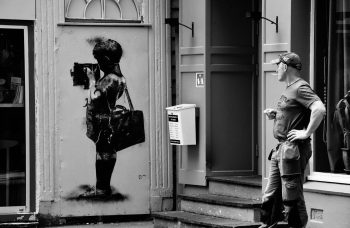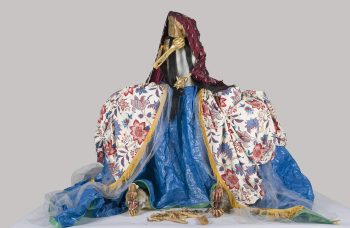Olafur Eliasson, the Icelandic/Danish artist known for his large-scale works often highlighting environmental issues, was recently appointed the newest Goodwill Ambassador for climate action and the Sustainable Development Goals (SDG). The position is part of the United Nations Development Programme (UNDP) who announced Eliasson’s role on September 22nd.
Launched in 2016, the UNDP Goodwill Ambassadors include people from various backgrounds who all have a common goals to improving quality of life around the planet. Specifically regarding Eliasson’s new role, the SDG is composed of 17 objectives that seek to end poverty, improve quality of life, and protect the planet in the next decade. Of Eliasson’s appointment, Ulrika Modeer, director of UNDP’s Bureau for External Relations and Advocacy said: ‘Throughout his career as an accomplished and globally influential artist, Olafur has shown a strong commitment toward fighting climate change and increasing access to renewable energy. As Goodwill Ambassador, Olafur will bring a new, creative perspective to social and environmental issues facing our world today. He will help shine a light on the underappreciated yet paramount ties between art and renewable energy and climate change, particularly for development.’
‘Life on Earth is about co-existence – among people, non-human animals, ecosystems, and the environment,’ said Eliasson during the Social Good Summit 2019 in New York, when he was announced as a Goodwill Ambassador. ‘Co-existence is beautiful and generative, chaotic and challenging. The fact is, we’re in it together. That’s why we all have to take the climate emergency seriously. To respond adequately to the crisis, we – individuals, institutions, businesses, and governments – must trust the science and bring together our knowledge, creativity, and energy.’
As early as 2003, Eliasson was focusing on the environment around us. That year, he was commissioned to transform Tate Modern’s Turbine Hall. The commission, alone, is a major achievement for artists and Eliasson took the opportunity to create The weather project. That work simulated an indoor sun that filled the massive hall with a yellow haze. Other works, like The New York City Waterfalls, commissioned by the Public Art Fund in 2008, and the Little Sun project, which he created alongside engineer Frederik Ottesen, each touched on the environment and environmental impact in their own ways. Another ongoing series is particularly potent these days. Ice Watch first began in 2014 when Eliasson brought massive chunks of ice sourced from glaciers near Nuuk, Greenland and sat them in the centre of Copenhagen where they melted over the following days. In 2015, he repeated the work in Paris during the UN Climate Summit (COP21), and again just last year in London. The purpose? To bring climate change and the ice sheets that are melting at alarming rates in places like Greenland to the places that never actually see the ice melting but will feel the effects of such events.
‘As an artist,’ stated Eliasson, ‘I believe that culture offers access to and a felt understanding of the challenges at hand.’ Eliasson feels like a natural recipient for such a role as we face the challenges he speaks of and his body of work continues to reflect his goals.





